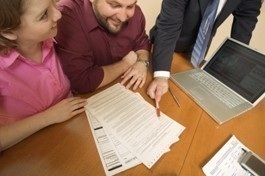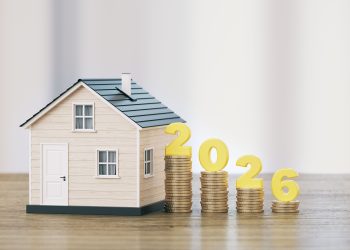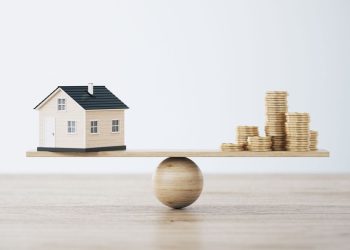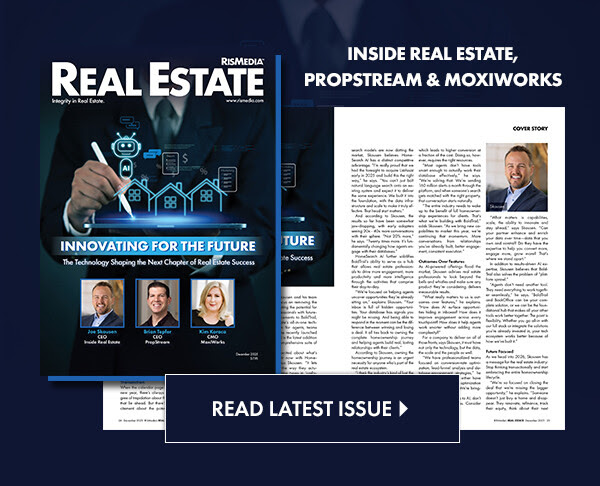 RISMEDIA, August 3, 2010—(MCT)—The 4.5% fixed-rate mortgage is here, although more than 14 months late. That magic number, or a close approximation, was reached recently, when Freddie Mac reported a 30-year rate of 4.54%. The possibility first arose in early 2009, when the government began mass-purchasing mortgages from Fannie Mae and Freddie Mac to prop up housing. Just about everyone predicted the rates would hit what builders and real estate agents call a “sweet spot” in a few months, and the housing recovery would begin, especially if consumer confidence had recovered to prerecession levels as well.
RISMEDIA, August 3, 2010—(MCT)—The 4.5% fixed-rate mortgage is here, although more than 14 months late. That magic number, or a close approximation, was reached recently, when Freddie Mac reported a 30-year rate of 4.54%. The possibility first arose in early 2009, when the government began mass-purchasing mortgages from Fannie Mae and Freddie Mac to prop up housing. Just about everyone predicted the rates would hit what builders and real estate agents call a “sweet spot” in a few months, and the housing recovery would begin, especially if consumer confidence had recovered to prerecession levels as well.
“What gets people buying again?” asked mortgage broker Peter Buchsbaum of Arlington Capital Mortgage in Horsham, Pa. “The answer is confidence—confidence in the value not falling and confidence they’ll still have a job.”
Even if behind schedule, the 4.5% rate has arrived, but in an environment that buyers perceive as anything but inviting.
Consumer confidence fell again in July, and why? Jobs and sagging real estate values.
“People will start buying houses again when they feel securely employed, house prices are rising, and they can make low down payments,” Bankrate.com columnist Holden Lewis said. “I don’t see any of those conditions coming anytime soon, at least in most parts of the country,” Lewis said. “Job security is the most important factor.”
Suburban homebuilder Marshal Granor said that “when we went under 6 percent, I was amazed and excited, but 4.5 percent artificially increases affordability. If rates start to climb, it will severely dampen already-spotty sales.”
Moody’s Economy.com chief economist Mark Zandi concurs. “The key to more homebuying is more jobs,” he said. “Once job growth kicks in earnestly, household growth will ramp up, and so will demand.”
Zandi added that despite these “extraordinarily low rates,” many prospective buyers have little savings for a down payment and tattered credit scores.” The securely employed appear to be nibbling at the bait, however.
“There’s a new group of buyers just entering the market because of the low rates,” said Art Herling, regional vice president of Long & Foster Real Estate, although the weather is keeping them “from totally getting into the buying mood.”
Buchsbaum also reports “a greater influx of buyers than past summers.”
Philadelphia Realtor Fred Glick compared the economy to a driver with his “feet on both the accelerator and the brake at the same time.”
“Until the jobs are produced, the banks start lending, and the underwriting guidelines start to make sense, we’ll be caught in this conundrum,” Glick said.
What about home prices?
Although the Case-Shiller Home Price Index rose again in May, economists believe that prices nationally will drop 6-8% more through the end of the year.
May’s increase, economists say, is attributable to the federal tax credit that expired April 30, and to seasonal buying patterns that typically boost prices.
The indexes are three-month moving averages, “so May’s readings reflect transactions in 20 markets that closed in March, April and May,” IHS Global Insight economist Patrick Newport said. With the credit gone, “we expect them to rise for two months, then start to decline,” with recovery in 2011.
That means a lot of buyers will remain on the sidelines until prices level off completely. The lowest fixed interest rates in 50 years won’t be enough to draw them in.
“Many people are bottom-fishing,” Herling said.
On the other hand, “People are starting to view houses as places to live and build equity over time, not financial assets where they can make a killing,” said economist Joel L. Naroff of Holland, Pa. If that is the case, demand for housing would rise much more moderately. “Add to that the lack of equity and the difficulty in qualifying for a mortgage, and the outlook for sales is not great,” Naroff said.
Interest rates are rock-bottom because the economy is rock-bottom. As more investors shift their money out of a volatile stock market and to the safety of Treasurys, rates will drop further, at least in theory.
Assuming “the debt crisis abates and the economy doesn’t double-dip, both of which seem more than likely,” Zandi expects rates to close in on 5% by year’s end and over 6% next year.
“I wouldn’t bet my mortgage payment on rates remaining this low for a long time,” Lewis said. “If I were refinancing, I would lock now instead of floating in hopes of rates falling further. I think there’s a greater possibility of rates rising than falling.”
(c) 2010, The Philadelphia Inquirer.
Distributed by McClatchy-Tribune Information Services.










